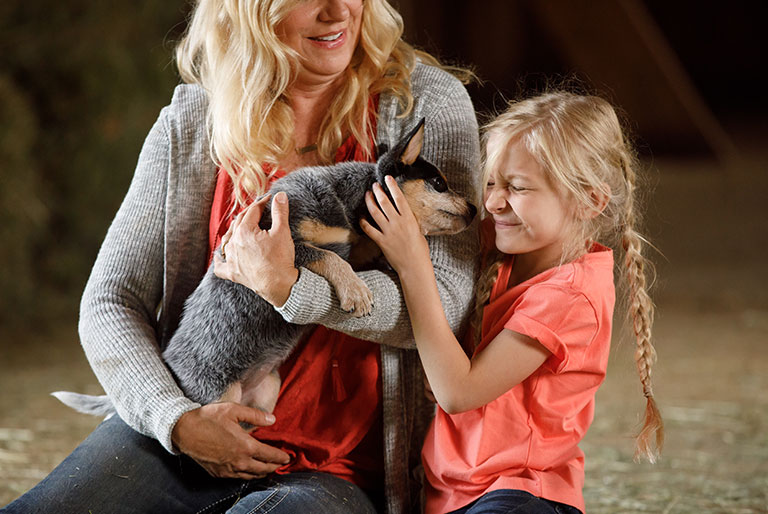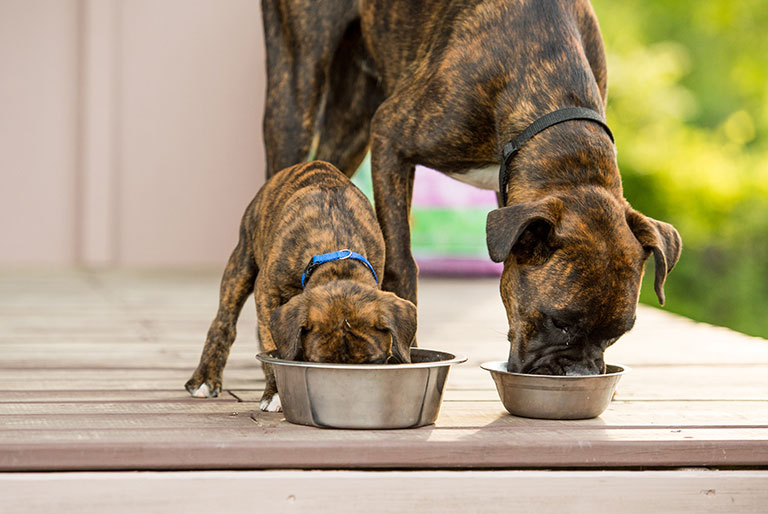
Dogs & Cats
Explore valuable resources to support your pet’s nutrition including our informative blog and frequently asked questions.
Save $10 with our Pet Food Trial
Pet Food Solutions
-

Cat & Kitten
From playful kittens to mature cats, get tailored nutrition recommendations and discover why we provide the best support for every stage of feline life.
Learn More -

Puppy
For all the boundless energy that comes with puppies, get food recommendations and learn why our nutrition builds a strong foundation for a healthy future.
Learn More -

Digestion
From mealtime to overall wellbeing, get dog food recommendations for digestive health and see how our formulas promote balance from the inside out.
Learn More -

Sensitive Skin & Coat
For happy skin and healthy shine, explore dog food solutions and see how our nutrition supports sensitive skin and coat.
Learn More -

Active Dog
From training sessions to adventure trails, find nutrition guidance for active dogs and discover how we support peak performance and recovery.
Learn More -

Adult Dog
From morning walks to evening cuddles, get food recommendations for adult dogs and learn why we deliver optimal nutrition for lifelong vitality.
Learn More -

Large Breed
From growing joints to strong muscles, get tailored feeding recommendations for large breed dogs and learn why our nutrition supports their unique needs.
Learn More -

Multiple Dogs
For the homes where one dog just isn’t enough, explore food solutions for multi-dog households and see how our nutrition keeps every dog happy.
Learn More -

Grain Free
For those that prefer we leave the grain out, get food recommendations for grain-free nutrition and learn how we deliver balanced diets without compromise.
Learn More


TruMune® Power
Technology Formulated to Promote Your Pet’s Best
Just like us, pets need nutritious meals to promote great well-being. Whether it’s keeping watch, following you through the fields, or snuggling up with you at the end of the day, you want the best for them and their needs.
With TruMune®, you can unleash the superpowers of postbiotics in your pet food and keep them healthy from nose to tail. You can ensure your favorite family member is at their happy and healthy best by choosing the Nutrena pet food that’s right for them.
Dog & Cat Blog Articles
-

Puppy Socialization – Fear Periods
Explore the important stages of a puppy’s development and how fear periods can affect their behavior.
View Blog -

Tips for Feeding Multiple Dogs
Insights on managing mealtime behavior, preventing food aggression, and choosing appropriate feeding methods such as separate bowls or timed feeding.
View Blog -

The Nutritional Needs of Large and Giant Dog Breeds
Explore how these essential nutrients can support overall health, coat condition, joint function, and more, providing valuable insights to optimize your pet’s diet and well-being.
View Blog
Dog & Cats FAQ
Your go-to resource for answers to common questions about our pet food and products. In this comprehensive FAQ section, we address various topics related to pet nutrition, feeding guidelines, ingredient sourcing, and more.
View All FAQs-
How do I switch my pet from his current diet to your product?
We recommend a slow transition from your current product to our diets. While diets may appear similar from the label, they may contain very different sources of nutrients that your pet will need to adapt slowly to.
It is recommended to transition diets over a 1 week period starting with ¾ of the daily amount of your previous diet and ¼ of the daily recommended amount of your selected new product. Change these amounts every 2 days by ¼ of the daily allotment until you fully convert to your new product completely on day 7.
As with all foods, the recommended amounts listed on your new packaging should be adjusted based on your individual pet to maintain a desirable body condition.
-
How long should my puppy stay on puppy food?
Puppy formulas are recommended for dogs up to 12 months of age because it contains nutrients like EPA and DHA and enhanced levels of vitamins and trace minerals, which are important for development. After 12 months, it is best to transition a dog to an adult formula.
-
I see different things about “grains” for pets. Are grains bad?
Grains are not “bad” for your pet. Some individual animals can have food allergies or sensitivity which may affect how they respond to specific grains. In the Loyall Life lineup of products, you will find selections of different grain sources that will help you select what is right for your companion.
Grains deliver starch and specific fatty acids and fiber to the diet that is important in the overall nutrition package of the diet. It is important that products are “cooked” correctly to get the most out of them. You wouldn’t eat corn or rice without cooking it, but you have probably been served corn or rice that has been on the stove too long. You know that cooking can be too much…or too little.
Our “Opti-Cook” process was developed to ensure that grains and other ingredients are cooked correctly to help provide a diet for your friend.
-
What are prebiotics, and what are they for?
Prebiotics are the ingredients that enhance the growth of good microbes or the good bugs in the digestive system. An example of a good bug is Lactobacillus. Since prebiotics encourage the growth of the good bugs, there generally isn’t room for the bad bugs to grow.
-
Are Nutrena pet foods available online?
While there may be retailers that carry Loyall Life and Nutrena True pet foods and sell them online, we do not have a central website that offers the products for sale.


